Advertisements
Chapters
1.2: Early Man
1.3: The River Valley Civilisations: Indus Valley Civilisation
1.4: The River Valley Civilisations: Egyptian, Mesopotamian and Chinese Civilisations
1.5: The Vedic Civilisation
1.6: Mahavira and Buddha – Great Preachers
1.7: Rise of Kingdoms and Republics
1.8: The Mauryan Empire
1.9: The Golden Age: Gupta Empire
2.1: Rural Local Self-Government
2.2: Urban Local Self-Government
![Goyal Brothers Prakashan solutions for Focus on History and Civics [English] Class 6 chapter 1.1 - History – An Introduction Goyal Brothers Prakashan solutions for Focus on History and Civics [English] Class 6 chapter 1.1 - History – An Introduction - Shaalaa.com](/images/9789352561230-focus-on-history-and-civics-english-class-6_6:e5ecdf9701864cb788294879a2b751f6.jpg)
Advertisements
Solutions for Chapter 1.1: History – An Introduction
Below listed, you can find solutions for Chapter 1.1 of CISCE Goyal Brothers Prakashan for Focus on History and Civics [English] Class 6.
Goyal Brothers Prakashan solutions for Focus on History and Civics [English] Class 6 1.1 History – An Introduction Exercise 1
Fill in the blank:
People who write history are known as _________.
Fill in the blank:
By __________we mean the study of the remains of the ancient past.
Fill in the blank:
The two ______ tell us about life and society in the ancient past, besides being religious books.
Old buildings which are important historically are known as ______.
Fill in the blank:
Meghadoot was written by _______.
Goyal Brothers Prakashan solutions for Focus on History and Civics [English] Class 6 1.1 History – An Introduction Exercise 2
Match Column A with Column B:
| Column A | Column B |
| 1. Archaeology | (a) People who write history. |
| 2. Historians | (b) Know this |
| 3. Histo | (c) Study of the remains of the past. |
| 4. Inscriptions | (d) An old book or document was written by hand. |
| 5. Manuscript | (e) Writings engraved either on stone surfaces or on metals or bricks. |
Goyal Brothers Prakashan solutions for Focus on History and Civics [English] Class 6 1.1 History – An Introduction Exercise 3
What is history? What is the origin of the word‘history’?
Why do we study history? Give two reasons.
Which period in history is called prehistoric?
Name two sources of history. What do literary sources include?
Give one example each of religious and secular literature.
What do we mean by culture?
Explain the term archaeology.
Goyal Brothers Prakashan solutions for Focus on History and Civics [English] Class 6 1.1 History – An Introduction Exercise 4
Distinguish between Archaeological sources and literary sources.
Distinguish between Monuments and inscriptions.
Distinguish between Religious and secular literature.
Goyal Brothers Prakashan solutions for Focus on History and Civics [English] Class 6 1.1 History – An Introduction Exercise 5
Given below are some drawings. Circle those which you think below to prehistory.
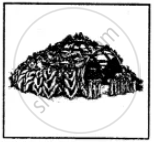
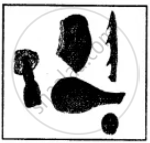
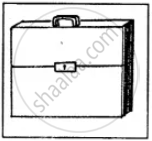
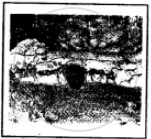

Goyal Brothers Prakashan solutions for Focus on History and Civics [English] Class 6 1.1 History – An Introduction Exercise 6
Picture study — This picture shows a valuable source of history.
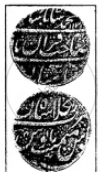
- Identify the source
- How do you think these are useful?
- What do you understand by the term ‘numismatics’?
Goyal Brothers Prakashan solutions for Focus on History and Civics [English] Class 6 1.1 History – An Introduction Exercise 7
Explanation of Keyword: History
Explanation of Keyword: Prehistory
Explanation of Keyword: Archaeology
Explanation of Keyword: Parchment
Explanation of Keyword: Sources
Explanation of Keyword.
Monuments
Explanation of Keyword: Inscriptions
Explanation of Keyword: Religious literature
Explanation of Keyword: Secular literature
Goyal Brothers Prakashan solutions for Focus on History and Civics [English] Class 6 1.1 History – An Introduction Additional Questions 1
Fill in the blank.
History is a record of ________ and events of the past, arranged in _______ order.
Fill in the blank.
Prehistory is the history of the period before ________were invented.
Fill in the blank.
The sources of history can be broadly classified into ___________sources and __________
Fill in the blanks.
The study of coins is known as ________
Fill in the blank.
Edicts are ___________ issued by kings.
Fill in the blank.
Inscriptions are _________on solid objects.
Fill in the blank.
Handwritten records of the past are known as ______________
Fill in the blank.
Literary source material can be divided into __________ literature and _______.
Fill in the blank.
The Greek ambassador in Chandragupta Maurya’s court was ________
Fill in the blanks.
The Chinese travelers who came to India were _______ and ______
Goyal Brothers Prakashan solutions for Focus on History and Civics [English] Class 6 1.1 History – An Introduction Additional Questions 2
Match the following.
| Column A | Column B |
| 1. Paintings | (a) Politics |
| 2. Monuments | (b) epigraphy |
| 3. Coins | (c) ancient law |
| 4. Inscriptions | (d) biography of a ruler |
| 5. Harshacharita | (e) cultural achievements |
| 6. Manusmriti | (f) numismatics |
| 7. Arthashastra | (g) Chinese traveller |
| 8. Fa Hien | (h) architectural achievements |
Goyal Brothers Prakashan solutions for Focus on History and Civics [English] Class 6 1.1 History – An Introduction Additional Questions 3
Answer the following question briefly:
What is history? Why do we study history?
Answer the following question.
What is the difference between prehistory and history?
Answer the following question.
How many groups can the sources of history be broadly divided into? Name them.
Answer the following question briefly.
What is archaeology? Why is it so important for the study of prehistory?
Answer the following question.
What are monuments?
Answer the following question.
Name five archaeological objects that provide important clues to the history of humans in the Ancient Period.
Answer the following question.
Why is the study of coins considered an important source of ancient history?
Answer the following question.
What information do we get from inscriptions?
Answer the following question.
Why are inscriptions a reliable source of information?
Answer the following question.
What are the manuscripts? On what surfaces were they; written?
Answer the following question.
How many categories can you divide literary sources into? Name them.
Answer the following question.
What do you understand by secular literature? Give two examples.
Goyal Brothers Prakashan solutions for Focus on History and Civics [English] Class 6 1.1 History – An Introduction Additional Questions 4
State whether the following is true or false.
History is only a record of great kings and queens.
True
False
State whether the following is true or false.
The study of old inscriptions is known as epigraphy.
True
False
State whether the following is true or false.
Banabhatta wrote Harshacharita.
True
False
State whether the following is true or false.
Panchatantra is a part of religious literature.
True
False
State whether the following is true or false.
The Angas is the religious literature of the Buddhists.
True
False
Goyal Brothers Prakashan solutions for Focus on History and Civics [English] Class 6 1.1 History – An Introduction Additional Questions 5
The picture below is a painting from a manuscript of the Rig Veda showing the various gods and goddesses worshiped.

- What kind of source of history is this?
- Is this religious or secular in nature?
- What kind of information does this source of history reveal?
Solutions for 1.1: History – An Introduction
![Goyal Brothers Prakashan solutions for Focus on History and Civics [English] Class 6 chapter 1.1 - History – An Introduction Goyal Brothers Prakashan solutions for Focus on History and Civics [English] Class 6 chapter 1.1 - History – An Introduction - Shaalaa.com](/images/9789352561230-focus-on-history-and-civics-english-class-6_6:e5ecdf9701864cb788294879a2b751f6.jpg)
Goyal Brothers Prakashan solutions for Focus on History and Civics [English] Class 6 chapter 1.1 - History – An Introduction
Shaalaa.com has the CISCE Mathematics Focus on History and Civics [English] Class 6 CISCE solutions in a manner that help students grasp basic concepts better and faster. The detailed, step-by-step solutions will help you understand the concepts better and clarify any confusion. Goyal Brothers Prakashan solutions for Mathematics Focus on History and Civics [English] Class 6 CISCE 1.1 (History – An Introduction) include all questions with answers and detailed explanations. This will clear students' doubts about questions and improve their application skills while preparing for board exams.
Further, we at Shaalaa.com provide such solutions so students can prepare for written exams. Goyal Brothers Prakashan textbook solutions can be a core help for self-study and provide excellent self-help guidance for students.
Concepts covered in Focus on History and Civics [English] Class 6 chapter 1.1 History – An Introduction are Introduction to History, Historians, Archaeology, Sources of History, Religious Literature, Monuments, Ancient History.
Using Goyal Brothers Prakashan Focus on History and Civics [English] Class 6 solutions History – An Introduction exercise by students is an easy way to prepare for the exams, as they involve solutions arranged chapter-wise and also page-wise. The questions involved in Goyal Brothers Prakashan Solutions are essential questions that can be asked in the final exam. Maximum CISCE Focus on History and Civics [English] Class 6 students prefer Goyal Brothers Prakashan Textbook Solutions to score more in exams.
Get the free view of Chapter 1.1, History – An Introduction Focus on History and Civics [English] Class 6 additional questions for Mathematics Focus on History and Civics [English] Class 6 CISCE, and you can use Shaalaa.com to keep it handy for your exam preparation.
